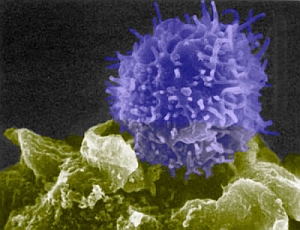MD Anderson Cancer Center in Houston, part of the University of Texas, and the global pharmaceutical company GlaxoSmithKline will jointly conduct research leading to new therapeutic antibodies that help the immune system fight cancer. The agreement over its full lifetime could earn MD Anderson as much as $335 million.
The agreement gives GlaxoSmithKline exclusive worldwide rights to develop and commercialize antibodies that activate OX40 receptors on the surface of T cells. T cells are a type of white blood cells known as lymphocytes produced by the thymus and play a key role in in the human immune system. These antibodies were discovered by MD Anderson researcher Yong-Jun Liu, who is now chief scientist with Baylor Research Institute in Dallas.
MD Anderson’s Institute for Applied Cancer Science will collaborate with GlaxoSmithKline on preclinical research on the antibodies. GlaxoSmithKline will pay MD Anderson an upfront license fee and provide funding for the preclinical research. MD Anderson will also receive development, regulatory, and commercial milestones, and be eligible for royalties from the commercial sale of products developed under the collaboration.
T cells have receptors that recognize and bind to antigens, which may include abnormal cells, such as malignant cancer cells. “T cell recognition of a tumor antigen is not enough to activate the T cells against cancer cells,” says Liu. “They need a secondary signal to tell them ‘that antigen you have is a bad thing, you have to attack.'”
OX40 is one of these secondary receptor proteins. In their research at MD Anderson, Liu and colleagues found that when OX40 is activated, it enhances immune attack and blocks suppressors of immune response. Activating OX40 requires a molecule called an agonist, and OX40L is a natural agonist that binds to OX40. Liu’s team at MD Anderson generated and screened hundreds of antibodies to find a handful for candidates that could mimic OX40L. The researchers tested the OX40L substitutes in mice and then modified the antibodies for human use.
Read more:
- Immunotherapy Developer Gains $4.9M in Series B Funds
- Enrollment Begins for Mesothelioma Vaccine Clinical Trial
- Novartis, Penn to Partner on Cancer Immunotherapies
- Bristol-Myers Squibb Sponsoring Cancer Research Network
- FDA Approves Melanoma Immunotherapy Drug
* * *


 RSS - Posts
RSS - Posts
[…] MD Anderson, GlaxoSmithKline Partner on Cancer Immunotherapy […]